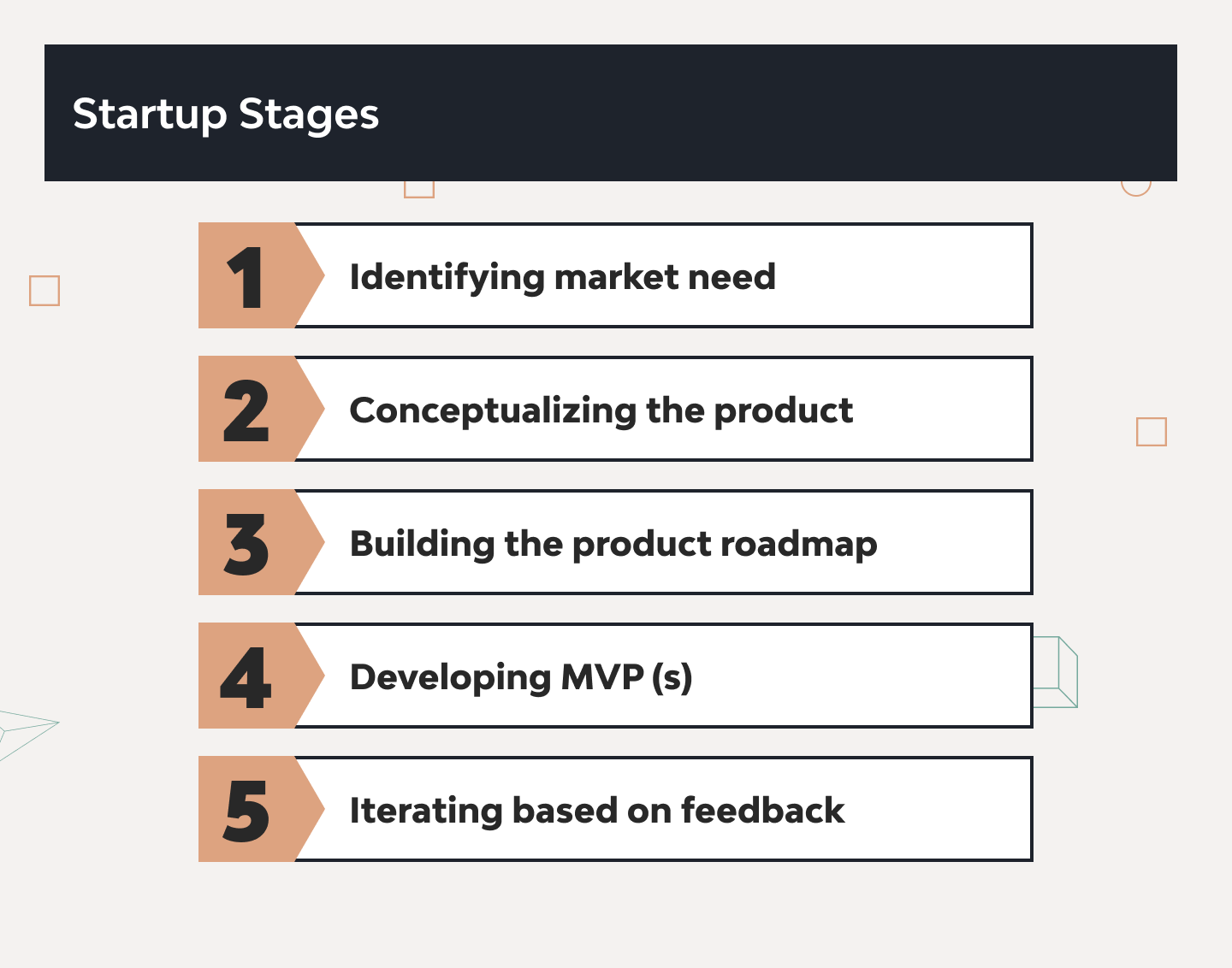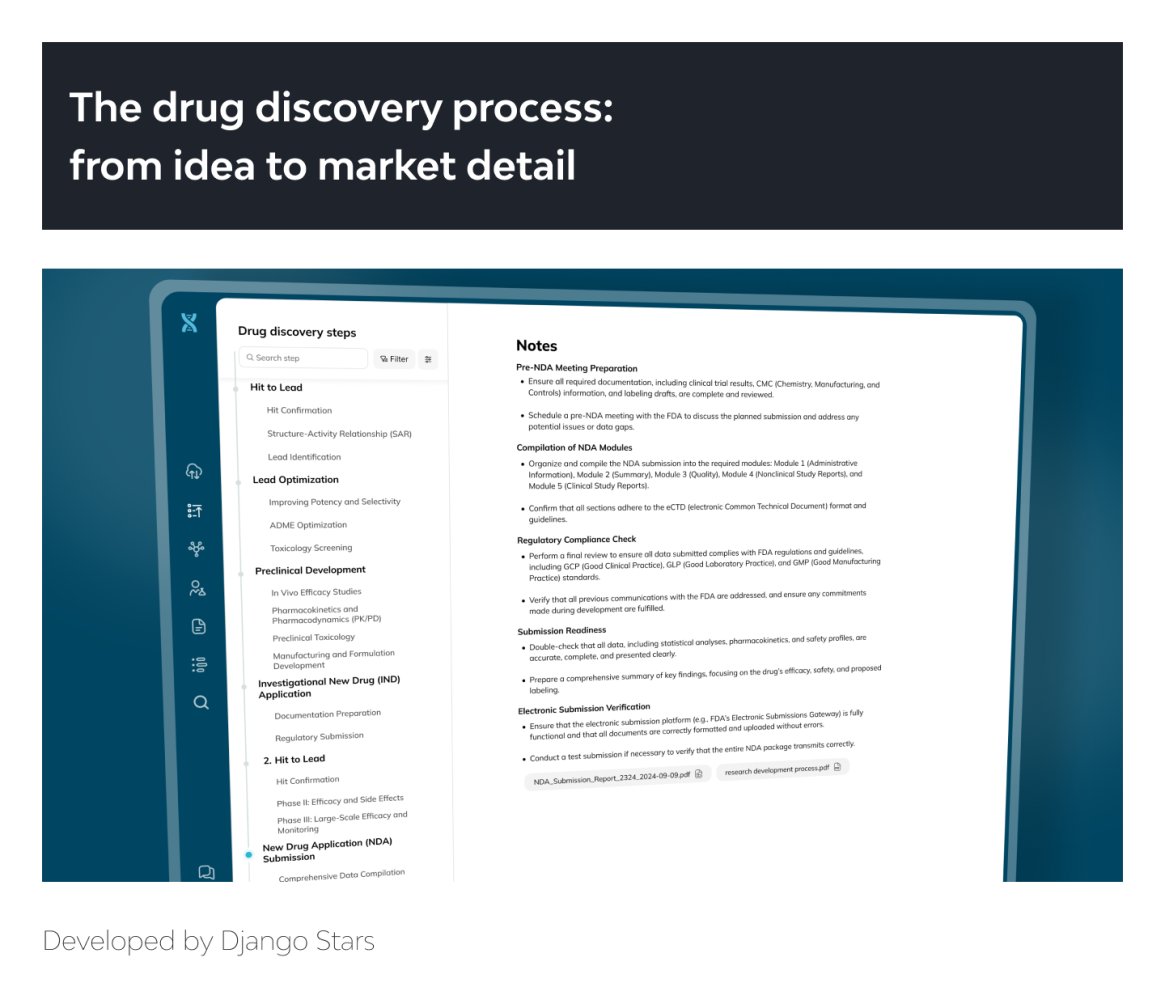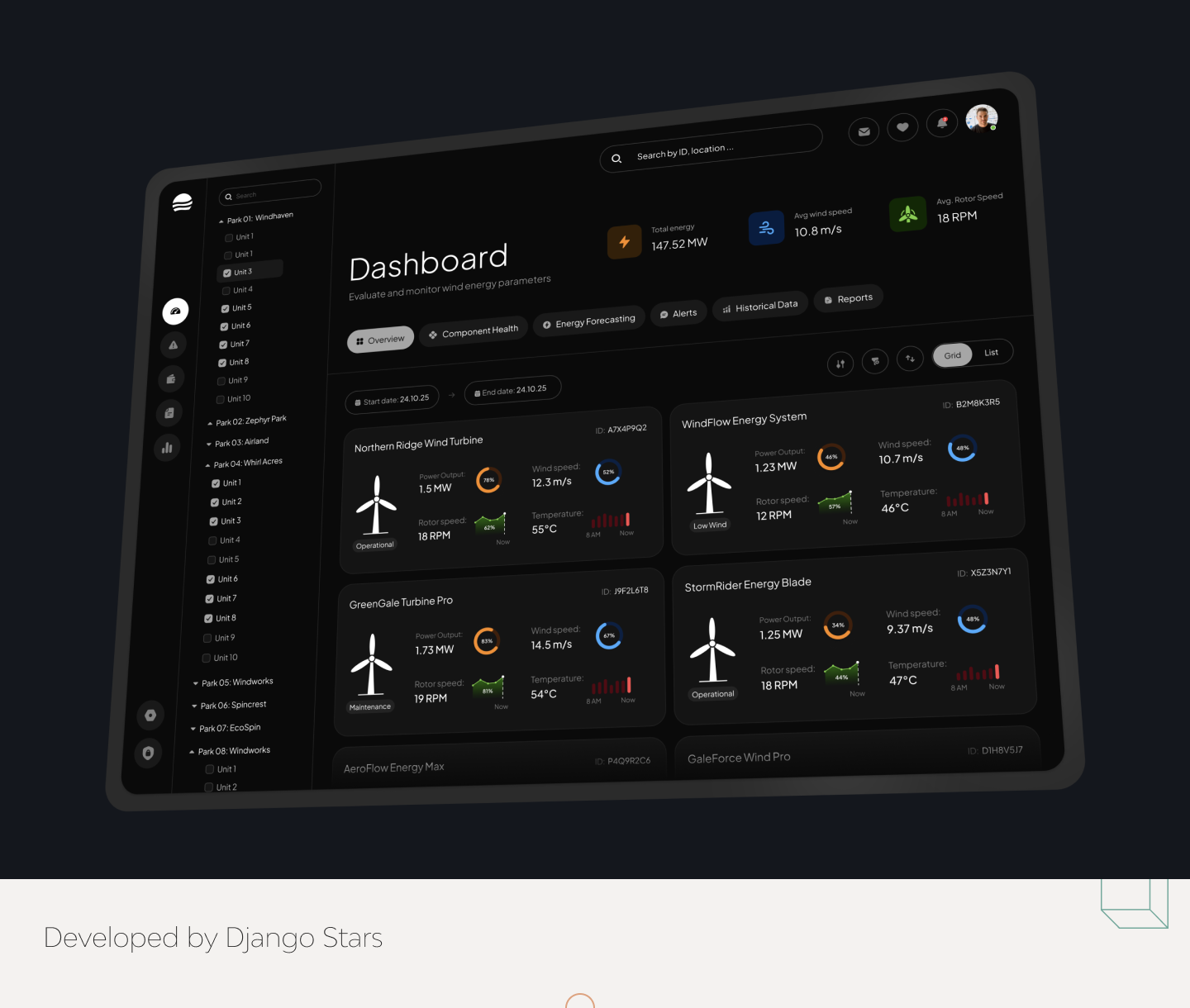MVP Development for Startups: A Guide to Building a Scalable Future

When we discuss scalability, we often think of well-established companies aiming to grow and acquire more customers. But is scalability also crucial when it comes to an MVP development services for startups? How often does scalability become an issue later? In McKinsey’s Global VC View: Funding Startups in the Next Normal, venture capitalists Roelof Botha and PJ Parson discuss scalability challenges. While our expertise lies in development rather than management, we strongly relate to the technical aspects highlighted.
Our experience and proficiency led us to write this guide on MVP scalability. While we can’t guarantee success of your product from a business perspective, we firmly believe that an MVP built to scale is more likely to attract funding and thrive in the market. Additionally, we encourage you to deepen your knowledge of tech startup stages and types. This understanding is essential for any tech entrepreneur. We discuss the MVP types here from a scalability point of view.
Types of MVP Development for Startups
When it comes to MVPs for startups (Minimum Viable Products), scalability varies greatly depending on the type of MVP you choose. Here’s a simplified overview, from low to high scalability:
Low Scalability MVPs
- Landing Page MVP
- Purpose: Test interest with a simple webpage.
- Scalability: Very low. It’s just a page to gauge interest, not a product you can grow. As traffic increases, it can handle more visits, but it doesn’t offer any real product functionality.
- Explainer Video MVP
- Purpose: Present a product idea through a video.
- Scalability: Very low. This is a marketing tool, not a scalable product. It’s great for initial feedback but doesn’t contribute to building a scalable business.
Medium Scalability MVPs
- Wizard of Oz MVP
- Purpose: Simulate a fully functional product by manually handling behind-the-scenes processes.
- Scalability: Medium. This MVP can’t scale without automating the manual processes, which can become a bottleneck as demand grows.
- Concierge MVP
- Purpose: Offer a personalized service by manually interacting with users.
- Scalability: Medium. Like the Wizard of Oz, this approach isn’t scalable because it relies on manual effort. Automation and standardization are needed to scale.
- Piecemeal MVP
- Purpose: Assemble a product using existing tools and services.
- Scalability: Medium to High. Scalability depends on the tools used. It’s quicker to build, but you may need to replace third-party tools with custom solutions to scale effectively.
- Crowdfunding MVP
- Purpose: Validate a product idea and secure funding through a crowdfunding campaign.
- Scalability: Medium. The MVP itself isn’t scalable, but it can secure the resources needed to build a scalable product later on.
- Pre-Order MVP
- Purpose: Offer a product for pre-sale before it’s fully developed.
- Scalability: Medium. Similar to crowdfunding, the MVP is about testing demand. The real scalability comes in how the product is developed after securing pre-orders.
High Scalability MVPs
- Single-Feature MVP
- Purpose: Focus on delivering one core feature that solves a critical problem.
- Scalability: High. By focusing on one feature, this MVP allows for a well-designed, scalable foundation. Additional features can be added later without major overhauls.
- Prototype MVP
- Purpose: Create a working model of the product for user testing.
- Scalability: Medium to High. While primarily for feedback, if designed well, it can be built out into a scalable product.
- Software MVP
- Purpose: Deliver a basic version of the software with essential functionality.
- Scalability: Very High. If built with a scalable architecture, this MVP serves as the foundation for the entire product, allowing it to grow as more users and features are added.
Summary: MVP Types to Consider
- Low Scalability: Landing Pages and Explainer Videos are great for initial validation but don’t offer a path to scale.
- Medium Scalability: Wizard of Oz, Concierge, and Crowdfunding MVPs help validate ideas but require significant changes to become scalable.
- High Scalability: Single-Feature and Software MVPs are designed with growth in mind and can scale effectively as the product evolves.
By choosing the right type of MVP, you can align your initial product development with your long-term scalability goals, ensuring that your product can grow as your user base and market demands increase.
Even though we mainly develop High Scalability MVPs, we believe that knowing the various types and benefits of MVPs could help Entrepreneurs, aiming to present their ideas and vision on the market.
Types of Startups and the Importance of MVP Scalability
At Django Stars, we’ve learned that no two startups are identical. They differ in goal, vision, size, funding, and ambition. There’s no one-size-fits-all advice for building an MVP for startups, but we’ve identified two primary categories of startups:
- Well-Funded Startups: These startups are fully resourced, with budgets that may exceed $500,000.
- Vision-Driven Startups: These are smaller ventures, often needing market validation, technological proof, or regulatory compliance.
Despite their differences, both types of startups share a common need: MVP scalability.
Startups grow, evolve, transform, and sometimes even change completely. Remember the stories of Flickr (owned by SmugMug) and Diviac (owned by PADI Travel)? Both began with one vision but ended with entirely different business models. These stories are not unique; the market is a powerful force that shapes products from their initial MVPs.
Two Startup MVP Development Strategies for Two Types of Startups
MVP development for startups varies based on available resources, market goals, and overall product vision. Well-funded startups often focus on building a robust, scalable MVP to capture market share quickly, while vision-driven startups concentrate on creating a lean version that captures their unique value proposition and engages early adopters. Both strategies aim to balance speed and innovation in the race to achieve product-market fit.
1. Well-Funded Startups: Invest in Speed and Market Fit
Well-funded startups are like high-performance sports cars. They have the resources to move quickly and make a significant impact right out of the gate. However, their primary risk lies in overcomplicating the MVP by building too much too soon. This can lead to bloated features, longer development times, and a product that fails to address core market needs.
Essential Factors for Startups with Adequate Funding
- Pay Attention to the Essentials: Don’t try to be flawless. Determine which features are most valuable to your users and rank them accordingly. Keep your focus on solving the core problem your startup addresses.
- Invest in Scalable Architecture: Allocate your budget to building an MVP on a scalable architecture from the start. Ensure the product can handle rapid growth.
- Prioritize Speed to Market: It’s better to be on the market, validate, and improve your startup idea than to wait for an ideal product that might take years to develop.
- Plan for Rapid Iteration: Continuously improve your product based on user feedback.
- Incorporate Innovation and Disruption: Consider scalability in terms of new, revolutionary features you already have or might develop.
2. Vision-Driven Startups: Test the Idea and Validate Your MVP
Vision-driven startups are often self-funded or operate with limited resources. Their focus is on proving that the idea is viable—both technically and in the market. Speed, creativity, and resourcefulness are the main drivers of these ventures. For these startups, the MVP is not just a product; it’s a solid ‘philosophy’ validation and infield challenge. It’s a means of proving to prospective backers, partners, and clients that the concept has a market. Here, it’s all about being lean, efficient, and economical while maximizing the use of scarce resources to produce something that has the potential to expand.
Key Considerations for Vision-Driven Startups:
- Keep It Lean: Focus on the essentials. Identify the minimum set of features, the so-called MVP backlog epic list, that will allow you to test your idea in the market and stick to them.
- Focus on Validation: The primary goal of the MVP for vision-driven startups is to validate the concept. Present the product to users as quickly as possible and gather feedback.
- Budget Matters: Discuss your budget constraints and the features you need for the MVP. Don’t be discouraged by budget limits; the most important part is to launch your MVP as quickly as possible. Discussing the budget will lead to a cost-effective MVP solution.
- Prepare for Pivots: With limited resources, you need to be ready to pivot quickly based on what you learn. Flexibility and scalability are key aspects of your MVP.
- Engage Your Community: Your users are your best asset. Build a community around your MVP from the start. These early adopters will not only provide feedback but can also become your biggest advocates, helping you grow organically.
7 Important Steps to Turn Your Startup Idea into an MVP
Step 1: Define the Problem
Every great product starts with a problem it wants to solve. For both well-funded and vision-driven startups, defining the issue your product will address is the first and most crucial step. The difference lies in how you approach this step based on your resources.
- For Well-Funded Startups: Your resources are key to extensive market research. Use focus groups, beta testers, competitor analysis, and other tools to gather valid data. Your goal is to deeply understand the problem and ensure your solution is better than anything else on the market.
- For Vision-Driven Startups: While you may not have the budget for extensive research, you can still gain valuable insights. Conduct informal interviews, survey potential users, and analyze existing solutions. Focus on understanding the core pain points and how your product can uniquely address them.
At Django Stars, we’ve helped startups do just that by developing two focused prototypes. One is a platform revolutionizing drug discovery by combining DNA sequence analysis with 3D protein modeling to accelerate the development of new medications with unprecedented targeting precision.
The other is a mobile wind turbine management platform, designed to streamline monitoring and optimize performance in the renewable energy space.
Align with Your Vision
Whether you’re well-funded or self-funded, your MVP should reflect your passion and vision. This is your chance to create something that truly represents your mission and resonates with your target audience.
Experience Sharing
In the case of Diviac, later PADITravel, the problem was the fragmented and cumbersome process divers faced when planning their trips. Diviac aimed to solve this issue by centralizing dive travel information and bookings into a single platform. To turn a startup idea into an MVP, it’s crucial to understand the market landscape. For Diviac, this meant analyzing the needs of divers and the existing solutions available to them. In tiny and day-to-day collaboration with Diviac founder, Django Stars helped conduct thorough research to identify, later adopt, and implement competitors’ business features that divers were lacking in current offerings. Similarly, start by identifying a specific pain point within your target market. Ensure this problem is significant and widespread enough to warrant the development of a dedicated solution.
Step 2: Prototype Your Idea
Prototyping allows you to visualize your product and gather feedback early on.
- For Well-Funded Startups: Invest in high-quality prototypes. You can afford it. Use advanced prototyping tools and even create multiple versions to test different ideas. Your goal is to refine the user experience and identify any potential issues before development begins.
- For Vision-Driven Startups: Create simple, functional prototypes that showcase the core features. The main focus is to get feedback quickly. The goal is to validate your idea and ensure that it resonates with your target audience.
Experience Sharing
Prototyping is an essential step that allows you to visualize your solution before full-scale development. For Diviac, Django Stars created prototypes that demonstrated the platform’s key functionalities, such as destination search and trip booking. This early visualization helped refine the user experience and gather feedback.
Step 3: Prioritize Features Wisely
With feedback from your prototype, it’s time to define the features that will make it into your MVP. Prioritize these features using frameworks like story mapping, which helps you visualize the user journey and determine which features are most important. This ensures that your MVP remains focused and avoids the pitfalls of feature creep.
- For Well-Funded Startups: You have the luxury of adding more features, but it’s still important to prioritize. Focus on the features that provide the most value and align with your long-term goals. Avoid feature creep by keeping the MVP focused.
- For Vision-Driven Startups: Keep it lean. Identify the core features that solve the primary problem and leave out anything that doesn’t contribute to the MVP’s main goal. The fewer features, the faster you can get to market.
Experience Sharing
Focus on including only the most critical functionalities that address the core problem. For Diviac, the MVP needed to include essential features like dive spot searches, booking options, and user reviews.
Step 4: Develop Your MVP
The development phase is where your MVP takes shape. We recommend exploring sustainable development strategies where possible.
When developing your MVP, check whether it is polished enough to demonstrate the core value of your product while remaining straightforward and efficient. The goal is to create a version of your product that users can interact with, providing immediate value while laying the groundwork for future iterations.
- For Well-Funded Startups: Invest in high-quality development. Use the latest technologies, hire experienced developers, and ensure that your product is built to scale from the start. The focus should be on creating a polished, professional product that can be rapidly iterated on.
- For Vision-Driven Startups: Focus on getting the MVP to market quickly and efficiently. To reduce MVP development cost, use budget-friendly development tools and consider outsourcing. The goal is to create a functional product that validates your idea.
Experience Sharing
For Diviac, Django Stars focused on creating a custom and, at the same time, high-quality platform that delivered a seamless user experience. The development team balanced the need for a professional product with the simplicity required in an MVP.
Step 5: Ensure Your MVP Is Scalable
Your MVP should be built with scalability in mind. As you develop and expand your product, user base, and services, think about how your digital MVP can evolve. Design your architecture to support this growth and guide your product in the direction your envision.
- For Well-Funded Startups: Build your MVP on a scalable architecture from day one. Make sure the codebase is structured well and is easy to change for future changes and growth. Additionally, utilizing cloud services well allows you to focus on the core features not the infrastructure.
- For Vision-Driven Startups: Even with a limited budget, prepare for growth. Make sure the codebase is optimized for changes to accommodate future pivots in vision which are sure to come. Cloud services also help you to just pay for what you use, even when the moment of exponential growth comes.
Experience Sharing
Diviac, which later became PADI Travel, was a unique product in its niche. Our software solution architects designed a system that was not only scalable and secure but also maintainable enough to accommodate future growth and additional features. Our engineers carefully selected the tech stack and integration points, ensuring that the platform could seamlessly handle everything from complex booking processes to real-time data updates.
Step 6: Launch, Get Feedback, and Iterate
Once your MVP is live, the real work begins. Gathering feedback and making improvements based on that feedback is key to success.
- For Well-Funded Startups: Leverage your resources to gather extensive feedback. Use analytics tools, conduct user interviews, and A/B test different features. Iterate quickly based on what you learn, and don’t hesitate to make significant changes if needed.
- For Vision-Driven Startups: Focus on gathering feedback from your core users. Use low-cost or free tools to collect data and prioritize changes that will have the most significant impact. The goal is to improve your product with each iteration based on real user needs.
Experience Sharing
Along with our customer PADI Travel, we continuously gathered insights from divers using Diviac to refine the platform. This feedback loop allowed us to make necessary adjustments and add features that resonated with users.
Step 7: Keep Iterating
The process of MVP development for startup doesn’t stop after the initial launch. Continuously improving your MVP based on feedback and market changes is crucial.
- For Well-Funded Startups: With more resources, you can afford to iterate rapidly and explore new features or markets. Keep a close eye on market trends and be ready to pivot if needed.
- For Vision-Driven Startups: Stay lean and focused. Use feedback to make meaningful improvements, but avoid overcomplicating your product. The goal is to stay agile and responsive to user needs.
Experience Sharing
For Diviac, ongoing iteration allowed the platform to grow and adapt to the changing needs of divers, eventually leading to its success and acquisition by PADI Travel.
Additional Considerations for MVP Development for Startups
When moving from idea to MVP, it’s important to look beyond the core product and consider additional factors that can support long-term growth. When ordering MVP development services, these considerations ensure that your MVP can handle technical scalability, operational demands, and customer support needs.
Partnerships and Third-Party Integrations
Integrating third-party services and forming strategic partnerships can significantly enhance the scalability of your startup MVP. These integrations provide additional functionalities without the need for extensive in-house development. For example, partnering with payment processors, CRM systems, or marketing automation tools allows your MVP to offer comprehensive solutions to users while maintaining a lean development approach.
Implementing Support Solutions
As your user base grows, so will the demand for customer support. Implementing support solutions, such as AI chatbots, can help manage this increased load. AI chatbots can handle common queries and provide instant responses, freeing up human support agents to tackle more complex issues.
Planning for Scaling Customer Support
Effective customer support is crucial for retaining users and maintaining a positive reputation. Planning for scaling customer support involves establishing tiered support systems that can grow with your user base. For instance, start with email support and gradually add live chat and phone support as needed. Training additional support staff and creating comprehensive knowledge bases can also help manage increased queries and issues efficiently.
Exploring AI MVP Development
AI-powered features can add significant value to your MVP, providing advanced functionalities such as personalized recommendations, predictive analytics, and automated processes. Developing an AI MVP involves creating a model that can learn and improve over time, offering more precise and relevant results to users. Our company has expertise in AI MVP development for startup, helping you integrate sophisticated AI capabilities into your product to enhance scalability and user experience.z
Scalability and Startup MVP Development Methodologies
When considering scalability, it’s crucial to recognize that different development methodologies offer varying levels of support for building MVPs for startups with scalability in mind.
The methodology you choose can significantly impact how well your product scales in the future, and several common mistakes can hinder scalability if not carefully managed.
Agile Methodology: Balancing Flexibility and Risk
Agile development is renowned for its adaptability and swift iterations. Yet, when it comes to scaling, there are critical factors to consider. The iterative approach of Agile fosters frequent releases and ongoing enhancement, which is superb for expediting product market entry. Nonetheless, the absence of comprehensive long-term planning characteristics in certain Agile methodologies can pose scalability issues in the future.
Mistakes to Avoid:
- Short-Term Focus: Agile teams sometimes prioritize immediate delivery over long-term scalability. While focusing on getting an MVP out quickly, teams may cut corners on architecture, leading to technical debt that makes scaling difficult later.
- Inadequate Documentation: Agile’s emphasis on working software above detailed documentation can lead to a poorly documented codebase, making it more difficult to scale the product as more features are added and the team grows.
Our Perspective
To sidestep these pitfalls, it’s crucial for Agile teams to find the right balance between speed and planning. While the main priority should be on quickly delivering a functional Minimum Viable Product (MVP), teams must also take into account the product’s future requirements, especially concerning architecture and documentation.
Lean Startup: Hypothesis Testing vs. Scalability
The Lean Startup methodology is crafted to swiftly test hypotheses with limited resources, often utilizing an MVP (Minimum Viable Product). This approach is highly effective for early idea validation but can pose scalability challenges if the MVP is not designed with future growth in mind.
Mistakes to Avoid:
- Oversimplification: Lean Startup advocates for creating the simplest possible version of a product. However, oversimplifying the MVP can lead to an architecture that fails to scale, necessitating extensive rework as the product becomes more popular.
- Lack of Scalability Consideration: In the eagerness to validate assumptions, Lean teams may overlook how the MVP will manage increased demand or additional features, resulting in scalability issues.
Our Perspective
While Lean Startup excels at rapid validation, it’s crucial for teams to ensure that even the simplest MVP is built on a scalable foundation. This doesn’t imply excessive engineering but rather thoughtful decisions regarding technology and architecture that can accommodate future growth.
Waterfall Methodology: Rigidity vs. Scalability
The Waterfall methodology is often criticized for its rigidity and long development cycles. However it does have the advantage of thorough planning and documentation. This approach can be beneficial for scalability, as the product is designed with a comprehensive understanding of requirements and potential growth from the beginning.
Mistakes to Avoid:
- Over-Planning: Waterfall’s long planning phase can result in over-engineering the MVP, making it unwieldy and difficult to pivot if the market demands it. This can result in an MVP that is scalable but not feasible in today’s market.
- Delayed Market Entry: Waterfall’s lengthy development cycles might cause the MVP’s release to be delayed, allowing for the loss of early customer feedback that could help drive scalability efforts.
Our Point of View
While Waterfall can support building an MVP, the key is to avoid over-complicating the product in the planning phase. Focus on building a scalable architecture without delaying the release, so you can gather feedback and still iterate if needed.
Extreme Programming (XP): Technical Excellence and Scalability
Extreme Programming (XP) focuses on technical excellence through approaches such as test-driven development (TDD) and continuous integration. These methods naturally lend themselves to creating an MVP that can be scaled as needed, as they encourage high-quality code and frequent reworking.
Mistakes to Avoid:
- Over-Engineering: XP’s emphasis on technical perfection can occasionally lead to over-engineering of the MVP. As a result, you’ll be more focused with writing perfect code than with developing a profitable and scalable solution.
- Neglecting Business Needs: XP’s strong emphasis on technical factors can sometimes overshadow business requirements, leading in a technically proficient product that is not necessarily in line with market demands.
Our Point of View
XP can be highly effective for building an MVP if the team maintains a balance between technical excellence and market viability. Focus on building a robust, scalable architecture, but ensure it aligns with business goals and customer needs.
Summary: Approach to MVP Development
An MVP validates a product idea with minimal resources. To scale, plan for future growth. Your methodology impacts scalability. Choose wisely.
Regardless of the method, plan for the future and be flexible. Avoid over-engineering, under-planning, and ignoring user feedback. Balance these factors for a successful, scalable MVP.
Bottom Line
Turning a startup idea into a viable MVP is about laying the groundwork for long-term success. By future-proofing your product, ensuring cost-efficiency, maintaining adaptability, and gaining a competitive advantage, a scalable MVP can propel your startup toward sustainable growth and success.
For successful startup MVP development, try to understand your market and clearly define your product’s unique value proposition. Choose technologies and architecture that support growth, such as cloud services and modular architecture. Focus on essential features that solve core problems without overloading the MVP. Ensure your code is easy to maintain and expand, facilitating future enhancements. Conduct thorough performance testing and implement strategies like caching and load balancing. Leverage cloud services for flexible and scalable infrastructure. Continuously gather and analyze user feedback to inform future development. Implement robust security practices to protect user data as your product grows.
Building an MVP that scales for startups is a critical step toward ensuring your long-term success. Our team at Django Stars is dedicated to helping startups develop reliable, scalable solutions tailored to their unique needs. Whether you are just starting out or looking to scale an existing MVP, we offer the expertise and support you need to achieve your goals. Reach for a consultation for personalized advice and to learn more about how we can assist with your MVP development. Let us help you turn your vision into a successful, scalable product. Contact us today to get started on your scalable MVP journey.



















